Phonetic Expressive Means Onomatopoeia Alliteration Rhyme Rhythm. Onomatopoeia








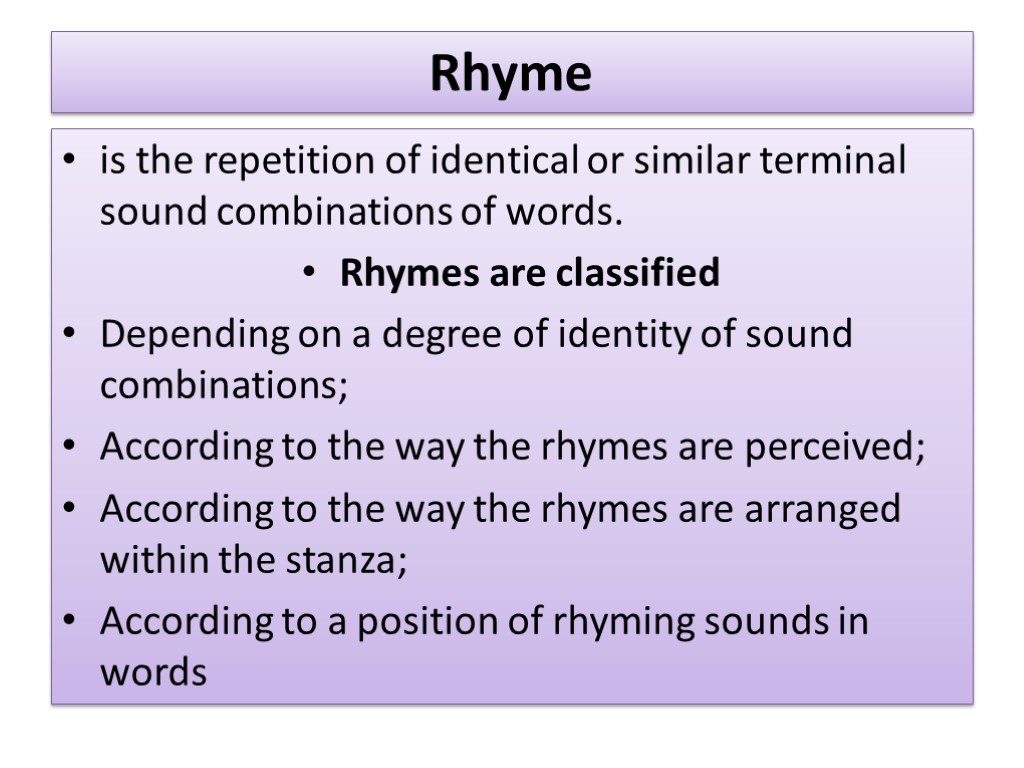




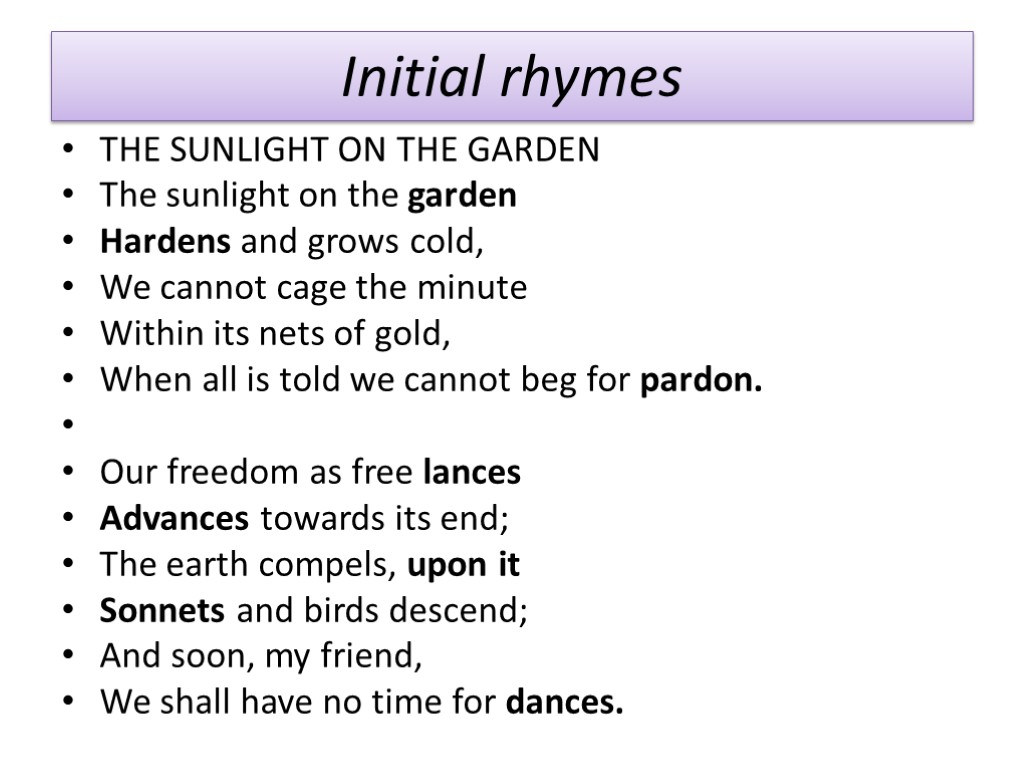

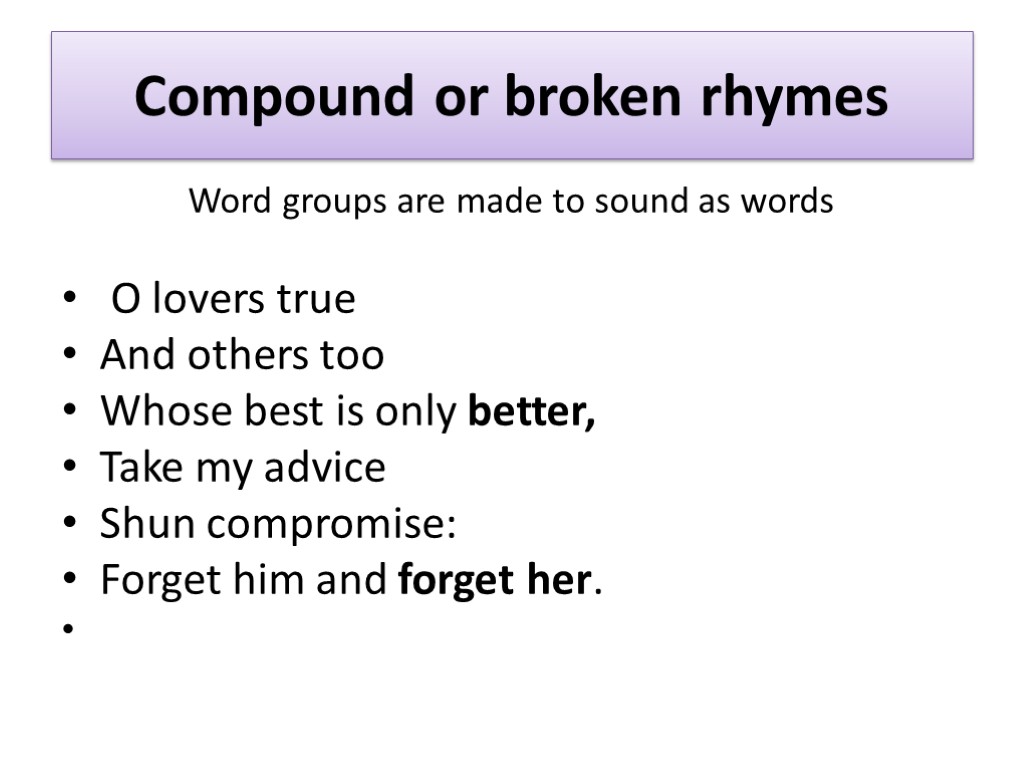


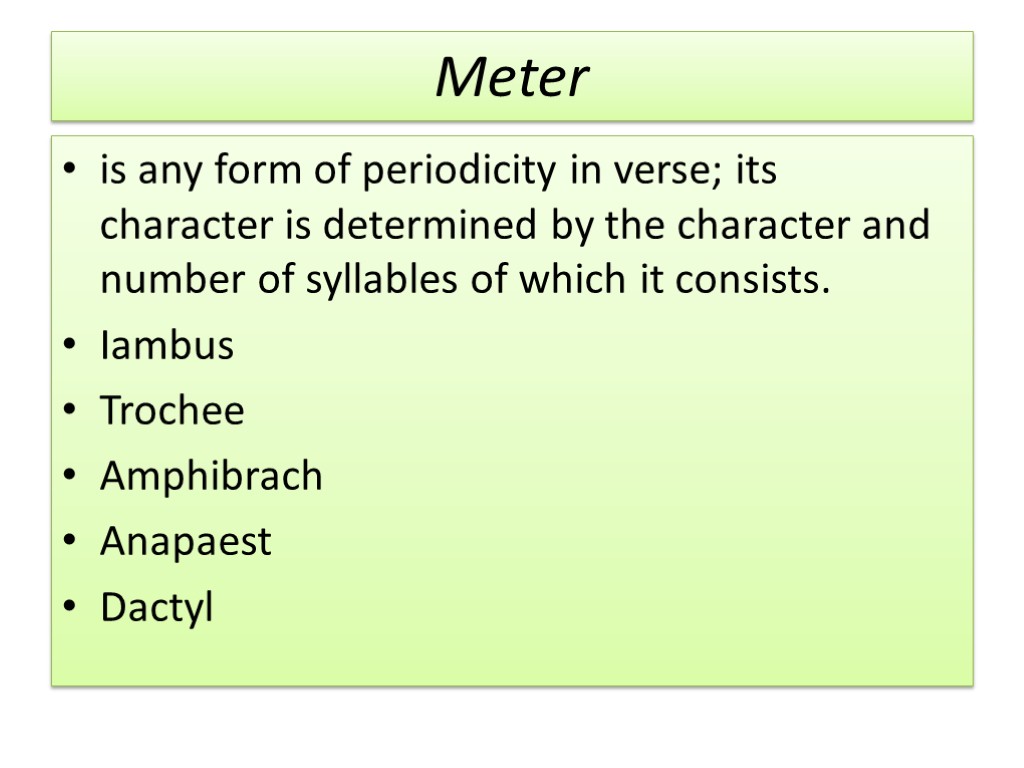







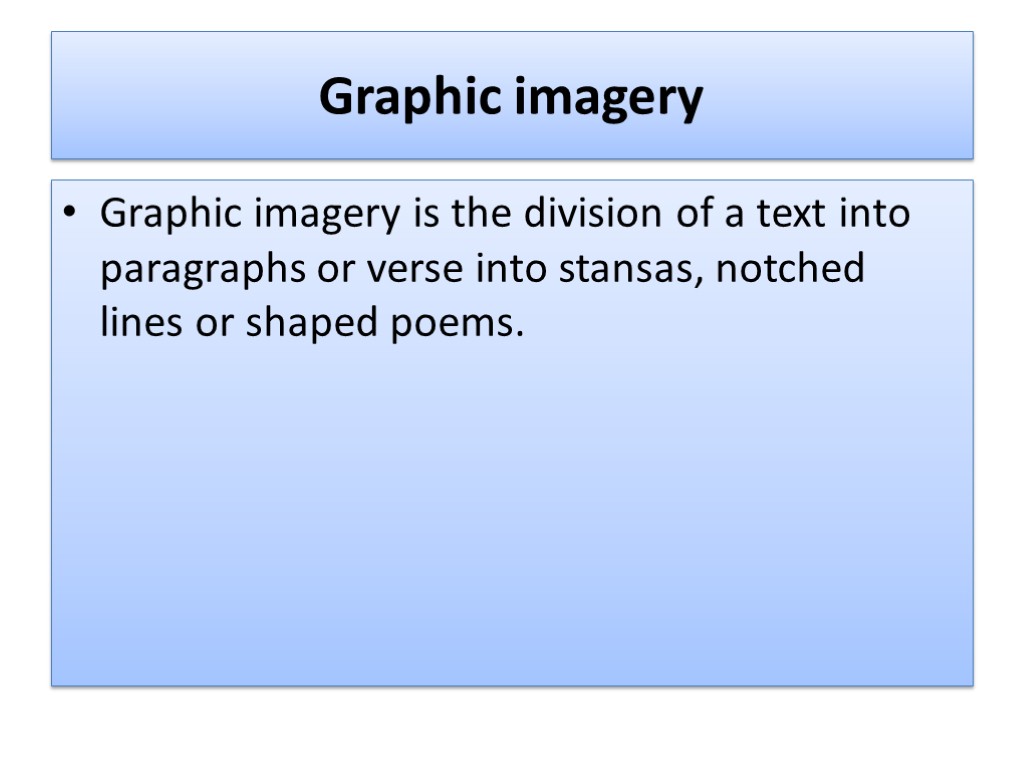


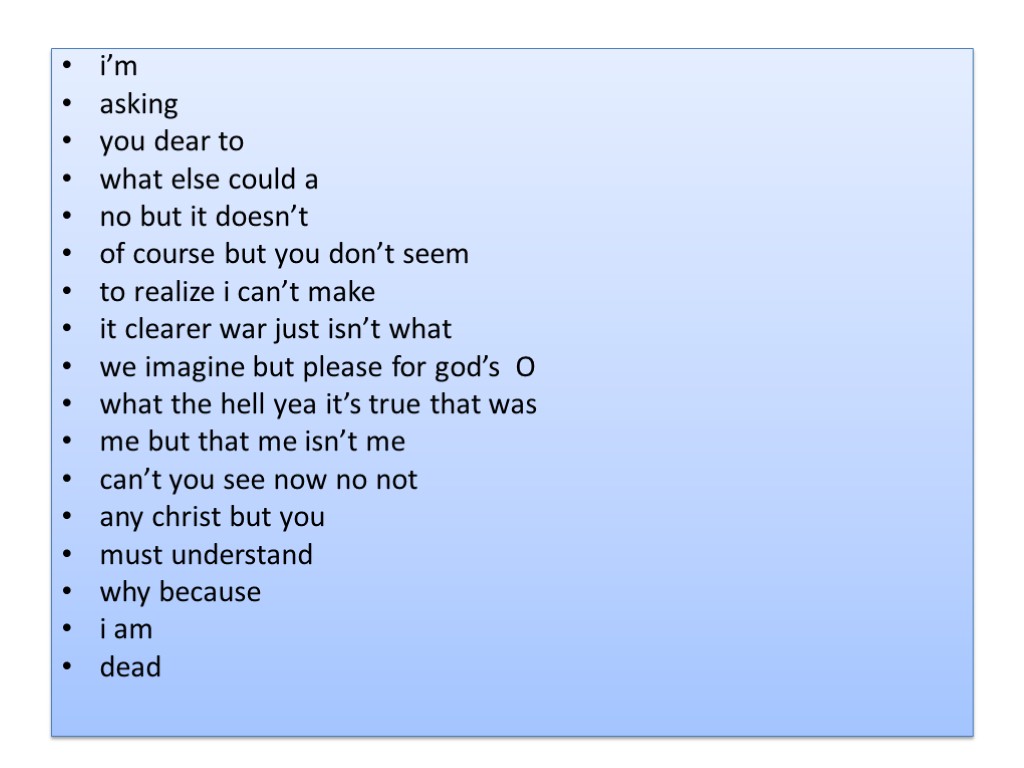
lecture_6_phonetic_expressive_means.ppt
- Количество слайдов: 29
 Phonetic Expressive Means Onomatopoeia Alliteration Rhyme Rhythm
Phonetic Expressive Means Onomatopoeia Alliteration Rhyme Rhythm
 Onomatopoeia is a combination of speech-sounds which aims at imitating sounds produced in nature, by things or people and animals. DIRECT (imitatation of natural sounds, as cuckoo, buzz, bang, purr, bow-wow, etc. INDIRECT (producing an echo effect in the utterance:repetition of a sound, or an ending, or a separate word.
Onomatopoeia is a combination of speech-sounds which aims at imitating sounds produced in nature, by things or people and animals. DIRECT (imitatation of natural sounds, as cuckoo, buzz, bang, purr, bow-wow, etc. INDIRECT (producing an echo effect in the utterance:repetition of a sound, or an ending, or a separate word.
 And the silken, sad, uncertain rustling of each purple curtain (Poe) And nearing and clearing,… And falling and crawling and sprawling, And gleaming and streaming and steaming and beaming, And in this way the water comes down at Ladore. (Southey) From the bells, bells, bells
And the silken, sad, uncertain rustling of each purple curtain (Poe) And nearing and clearing,… And falling and crawling and sprawling, And gleaming and streaming and steaming and beaming, And in this way the water comes down at Ladore. (Southey) From the bells, bells, bells
 Alliteration is a phonetic stylistic device aimed at imparting a melodic effect to the utterance by means of the repetition of similar sounds in close succession, usually at the beginning of successive words, or in closely placed stressed syllables, e.g., Doom is dark and deeper than any sea. (Auden)
Alliteration is a phonetic stylistic device aimed at imparting a melodic effect to the utterance by means of the repetition of similar sounds in close succession, usually at the beginning of successive words, or in closely placed stressed syllables, e.g., Doom is dark and deeper than any sea. (Auden)
 Alliteration can still be found in proverbs and sayings, as ‘tit for tat,’ between and betwixt’, or in the titles of the books: ‘Pride and Prejudice”, “Sense and Sensibility”.
Alliteration can still be found in proverbs and sayings, as ‘tit for tat,’ between and betwixt’, or in the titles of the books: ‘Pride and Prejudice”, “Sense and Sensibility”.
 Assonance, or vocalic alliteration is the repetition of stressed vowels within a line or a phrase, e.g., …Tell this soul, with sorrow laden, if within the distant Aiden, I shall clasp a sainted maiden, whom the angels name Lenore – Clasp a rare and radiant maiden, whom the angels name Lenore? (Poe)
Assonance, or vocalic alliteration is the repetition of stressed vowels within a line or a phrase, e.g., …Tell this soul, with sorrow laden, if within the distant Aiden, I shall clasp a sainted maiden, whom the angels name Lenore – Clasp a rare and radiant maiden, whom the angels name Lenore? (Poe)
 J. Leech combined all possible variants of repetition of consonants (c) and vowels (v): 1. Alliteration Cvc: great – grow, send – sit 2. Assonance cVc: great – fail, send – bell 3. Consonance cvC: great – meat, send – hand 4. Back-rhyme CVc: great – grazed, send – sell 5. Pararhyme CvC: great – grout, send – sound 6. Rhyme cVC: great – bait, send – end.
J. Leech combined all possible variants of repetition of consonants (c) and vowels (v): 1. Alliteration Cvc: great – grow, send – sit 2. Assonance cVc: great – fail, send – bell 3. Consonance cvC: great – meat, send – hand 4. Back-rhyme CVc: great – grazed, send – sell 5. Pararhyme CvC: great – grout, send – sound 6. Rhyme cVC: great – bait, send – end.
 Rhyme is the repetition of identical or similar terminal sound combinations of words. Rhymes are classified Depending on a degree of identity of sound combinations; According to the way the rhymes are perceived; According to the way the rhymes are arranged within the stanza; According to a position of rhyming sounds in words
Rhyme is the repetition of identical or similar terminal sound combinations of words. Rhymes are classified Depending on a degree of identity of sound combinations; According to the way the rhymes are perceived; According to the way the rhymes are arranged within the stanza; According to a position of rhyming sounds in words
 Depending on a degree of identity of sound combinations rhymes fall into FULL In full rhymes the vowel sound and the consonant sounds in a stressed syllable are identical: light – right, might – bite, flown – grown, etc. INCOMPLETE Vowel Consonant In vowel rhymes words have identical vowels but differ in consonants: flesh – fresh – press, etc. Consonant rhymes have identical consonants and differ in vowel: worth – forth, tale – tool – Treble – trouble; flung – long, etc.
Depending on a degree of identity of sound combinations rhymes fall into FULL In full rhymes the vowel sound and the consonant sounds in a stressed syllable are identical: light – right, might – bite, flown – grown, etc. INCOMPLETE Vowel Consonant In vowel rhymes words have identical vowels but differ in consonants: flesh – fresh – press, etc. Consonant rhymes have identical consonants and differ in vowel: worth – forth, tale – tool – Treble – trouble; flung – long, etc.
 According to the way the rhymes are perceived they fall into ear-rhymes eye-rhymes: the letters but not the sounds are identical: love – prove, flood – brood, have – grave. They are results of historical changes in the vowels in certain positions.
According to the way the rhymes are perceived they fall into ear-rhymes eye-rhymes: the letters but not the sounds are identical: love – prove, flood – brood, have – grave. They are results of historical changes in the vowels in certain positions.
 According to the way the rhymes are arranged within the stanza Couplet – aa – the last words of two successive lines are rhymed Triple rhymes – aaa – the last words of three successive lines are rhymed. Cross rhymes – abab –the last words of the 1st and the 3rd lines, the 2nd and the 4th lines are rhymed. Framing or ring rhymes – abba – the last words of the 1st and the 4th, the 2nd and the 3rd lines are rhymed
According to the way the rhymes are arranged within the stanza Couplet – aa – the last words of two successive lines are rhymed Triple rhymes – aaa – the last words of three successive lines are rhymed. Cross rhymes – abab –the last words of the 1st and the 3rd lines, the 2nd and the 4th lines are rhymed. Framing or ring rhymes – abba – the last words of the 1st and the 4th, the 2nd and the 3rd lines are rhymed
 According to a position of rhyming sounds in words initial, Initial rhymes are those that connect the end of a line with the beginning of the following; it reminds of a lexical device anadiplosis/catch repetition. final and internal rhymes. In internal rhymes the rhyming words are placed not at the end of the lines but within the line,
According to a position of rhyming sounds in words initial, Initial rhymes are those that connect the end of a line with the beginning of the following; it reminds of a lexical device anadiplosis/catch repetition. final and internal rhymes. In internal rhymes the rhyming words are placed not at the end of the lines but within the line,
 Initial rhymes THE SUNLIGHT ON THE GARDEN The sunlight on the garden Hardens and grows cold, We cannot cage the minute Within its nets of gold, When all is told we cannot beg for pardon. Our freedom as free lances Advances towards its end; The earth compels, upon it Sonnets and birds descend; And soon, my friend, We shall have no time for dances.
Initial rhymes THE SUNLIGHT ON THE GARDEN The sunlight on the garden Hardens and grows cold, We cannot cage the minute Within its nets of gold, When all is told we cannot beg for pardon. Our freedom as free lances Advances towards its end; The earth compels, upon it Sonnets and birds descend; And soon, my friend, We shall have no time for dances.
 Internal rhymes When you’re lying awake with a dismal headache, and repose is tabooed by anxiety, I conceive you may use any language you choose to indulge in without impropriety. (Gilbert and Sellivan)
Internal rhymes When you’re lying awake with a dismal headache, and repose is tabooed by anxiety, I conceive you may use any language you choose to indulge in without impropriety. (Gilbert and Sellivan)
 Compound or broken rhymes Word groups are made to sound as words O lovers true And others too Whose best is only better, Take my advice Shun compromise: Forget him and forget her.
Compound or broken rhymes Word groups are made to sound as words O lovers true And others too Whose best is only better, Take my advice Shun compromise: Forget him and forget her.
 Rhyme functions Due to its consolidating function, rhyme consolidates ideas expressed in the rhyming lines. The dissevering function of rhyme is particularly felt when it occurs unexpectedly in ordinary speech or in prose. The listener’s attention is caught by the rhyme and may lose the thread of the discourse.
Rhyme functions Due to its consolidating function, rhyme consolidates ideas expressed in the rhyming lines. The dissevering function of rhyme is particularly felt when it occurs unexpectedly in ordinary speech or in prose. The listener’s attention is caught by the rhyme and may lose the thread of the discourse.
 Rhythm is a flow, movement, procedure, etc., characterized by basically regular recurrence of elements or features, as beat, or accent, in alteration with opposite or different elements or features. Rhythm in language demands opposition that alternate: long – short, stressed – unstressed, high – low, and other contrasting segments of speech
Rhythm is a flow, movement, procedure, etc., characterized by basically regular recurrence of elements or features, as beat, or accent, in alteration with opposite or different elements or features. Rhythm in language demands opposition that alternate: long – short, stressed – unstressed, high – low, and other contrasting segments of speech
 Meter is any form of periodicity in verse; its character is determined by the character and number of syllables of which it consists. Iambus Trochee Amphibrach Anapaest Dactyl
Meter is any form of periodicity in verse; its character is determined by the character and number of syllables of which it consists. Iambus Trochee Amphibrach Anapaest Dactyl
 Phonetic stylistic means The performer’s means are the prosodic elements the choice and use of which depend on the performer. The author’s phonetic means depend on the sound inventory of the given language, the choice of words, their position and repetition in the text.
Phonetic stylistic means The performer’s means are the prosodic elements the choice and use of which depend on the performer. The author’s phonetic means depend on the sound inventory of the given language, the choice of words, their position and repetition in the text.
 Graphic Expressive Means Punctuation marks. Capital letters. Peculiarities of print. Graphic imagery.
Graphic Expressive Means Punctuation marks. Capital letters. Peculiarities of print. Graphic imagery.
 Punctuation marks exclamation marks A truth, a faith, a generation of men goes – and is forgotten, and it doesn’t matter! (J.Conrad) Dash With my hand on my heart – farewell. (J. Webster) And then – and then – I saw it was you! (J. Webster)
Punctuation marks exclamation marks A truth, a faith, a generation of men goes – and is forgotten, and it doesn’t matter! (J.Conrad) Dash With my hand on my heart – farewell. (J. Webster) And then – and then – I saw it was you! (J. Webster)
 suspension marks: Oh, he’s a… he’s a kind of acquaintance. a full stop Triumphal march Stone, bronze, stone, steel, stone, oak leaves, horses’ heels over the paving. And the flags. And the trumpets. And so many eagles. How many? Count them. And such a press of people. (T. Eliot)
suspension marks: Oh, he’s a… he’s a kind of acquaintance. a full stop Triumphal march Stone, bronze, stone, steel, stone, oak leaves, horses’ heels over the paving. And the flags. And the trumpets. And so many eagles. How many? Count them. And such a press of people. (T. Eliot)
 Inverted comas “Dead, dead, dead” The telegram from the War Office – “regret to inform… killed in action… Their Majesties’ sympathy…” – went to the home address in the country, and was opened by Mrs. Winterbourne. The absence of punctuation marks
Inverted comas “Dead, dead, dead” The telegram from the War Office – “regret to inform… killed in action… Their Majesties’ sympathy…” – went to the home address in the country, and was opened by Mrs. Winterbourne. The absence of punctuation marks
 Capital letters. O, music! Sphere-descended maid, Friend of pleasure, Wisdom’s aid! (W. Collins) The only way I can ever repay you is by turning out a Very Useful Person. (J. Webster) You never answered my question and it was very important. ARE YOU BALD? (J. Webster) “AS – I – WAS – SAYING”, said Eyore loudly and sternly, “as I was saying when I was interrupted by various Loud Sounds, I feel that – “ (A. Milne)
Capital letters. O, music! Sphere-descended maid, Friend of pleasure, Wisdom’s aid! (W. Collins) The only way I can ever repay you is by turning out a Very Useful Person. (J. Webster) You never answered my question and it was very important. ARE YOU BALD? (J. Webster) “AS – I – WAS – SAYING”, said Eyore loudly and sternly, “as I was saying when I was interrupted by various Loud Sounds, I feel that – “ (A. Milne)
 Peculiarities of print Italics are used to show epigraph, quotations, barbarisms, titles, etc., everything that is felt as alien to the text and needs strengthening (emphatic italics), e.g., I will write a respectable letter when it’s over. Tonight I have a pressing engagement with the Ablative Absolute. (J. Webster) I’m crazy to go back and begin work. (J. Webster) Alors! I’m an AUTHOR. (J. Webster)
Peculiarities of print Italics are used to show epigraph, quotations, barbarisms, titles, etc., everything that is felt as alien to the text and needs strengthening (emphatic italics), e.g., I will write a respectable letter when it’s over. Tonight I have a pressing engagement with the Ablative Absolute. (J. Webster) I’m crazy to go back and begin work. (J. Webster) Alors! I’m an AUTHOR. (J. Webster)
 Graphic imagery Graphic imagery is the division of a text into paragraphs or verse into stansas, notched lines or shaped poems.
Graphic imagery Graphic imagery is the division of a text into paragraphs or verse into stansas, notched lines or shaped poems.
 THE INNER MAN Their marriage was a perfect union of trust and understanding. They shared everything – except his desk drawer, which, through the years remained locked. One day, curiosity overcame her. Prised open, there was – nothing. ‘But why?’ she asked, confused and ashamed. ‘I need a space of my own,’ he replied sadly. Christine M. Banks
THE INNER MAN Their marriage was a perfect union of trust and understanding. They shared everything – except his desk drawer, which, through the years remained locked. One day, curiosity overcame her. Prised open, there was – nothing. ‘But why?’ she asked, confused and ashamed. ‘I need a space of my own,’ he replied sadly. Christine M. Banks
 The famous Mouse story from “Alice in Wonderland” by L. Carroll is created on the interaction of two devices: pun and a shaped verse. – “Fury said to a mouse, that he met in the house, ‘Let’s us both go to law: I will prosecute you.– Come, I’ll take no denial: We must have a trial; For really this
The famous Mouse story from “Alice in Wonderland” by L. Carroll is created on the interaction of two devices: pun and a shaped verse. – “Fury said to a mouse, that he met in the house, ‘Let’s us both go to law: I will prosecute you.– Come, I’ll take no denial: We must have a trial; For really this
 i’m asking you dear to what else could a no but it doesn’t of course but you don’t seem to realize i can’t make it clearer war just isn’t what we imagine but please for god’s O what the hell yea it’s true that was me but that me isn’t me can’t you see now no not any christ but you must understand why because i am dead
i’m asking you dear to what else could a no but it doesn’t of course but you don’t seem to realize i can’t make it clearer war just isn’t what we imagine but please for god’s O what the hell yea it’s true that was me but that me isn’t me can’t you see now no not any christ but you must understand why because i am dead

